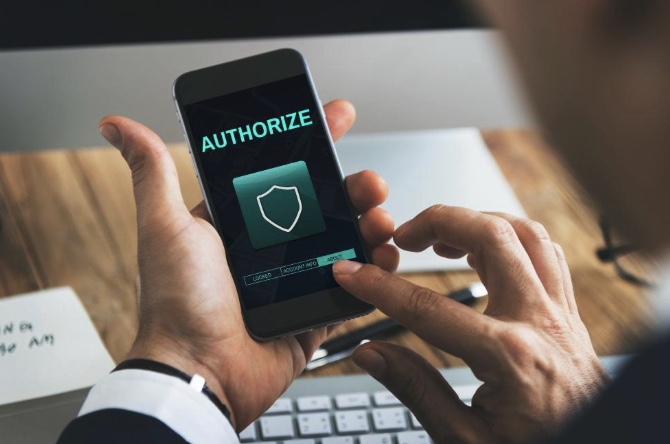Cybersecurity for Mobile Devices: Protecting Your Digital Identity on the Go

With over 50,000 individual personal data breaches in the US, the cyber threat keeps getting bigger in terms of digital identity theft. Every one in three Americans has faced some kind of ID theft. The growing reliance on mobile devices for personal and professional use creates an increasing need for cybersecurity. Security threats are growing and evolving all the time. In today’s digital world, your digital identity needs protecting. It consists of everything from your I.D. and bank account information to your login details for your email and online shopping accounts. This information is attractive to hackers and makes you vulnerable to identity theft or fraud.
Identity theft is mainly for money-making purposes but cybercriminals will steal identities for many reasons, such as accessing medical services, renting apartments, and even getting jobs. To protect your devices and your digital identity, you need to understand common threats.
The rising threats to mobile security
Common cybersecurity threats that target mobile devices include phishing, malware, spyware, and man-in-the-middle attacks. As a mobile user, you are particularly vulnerable to phishing attacks as you are likely to monitor your emails from your phone. An email may appear to come from a legitimate source but when you click on a link or download an attachment, you may become a victim of identity theft or infect your device with malware. Cybercriminals also use text messages to trick you into downloading malware by clicking on a malicious link. According to Statista, about 440 thousand malicious installation packages were found on mobile devices across the world in the final quarter of 2023.
Moonlock’s team has 47 combined years of experience in cybersecurity. The Moonlock Engine will scan your Mac computer and other devices for threats and neutralize them before they can do any damage. Moonlock.com believes that technology shouldn’t make you vulnerable – it should keep you safe. An in-house research team detects and studies emerging malware to make sure the Engine can detect it. Its Mac apps package complex information in a way that makes them easy for anyone to use. Installing and using security software on your computers and phones makes you safer while you browse, bank, or shop online.
Best practices for securing your mobile device
There are a number of best practices you should use to protect your digital identity.
- Keep your device’s operating system and apps updated. The updates usually contain important security fixes to address vulnerabilities.
- You hear this all the time because it’s so important. Use unique, strong passwords, and don’t ever use one on more than one platform. Using a password manager can help you to create strong passwords and manage them effectively.
- Two-factor authentication will enhance your mobile security because even if hackers get hold of your password, they can’t use it on its own to gain access to your accounts.
- Only download apps from sources you trust. Downloading risky and malicious apps can cause havoc on your mobile phone.
- Use the privacy settings on your social media accounts so only friends and family can see your posts. Rather avoid doing quizzes on social media. This can put you at risk because hackers use this as a way to acquire personal information.
- You can unintentionally compromise your personal data when using a mobile app if you give it permissions it doesn’t need in order to function. Android and Apple iOS have both added protocols to make users more aware of this issue.
Protecting your digital identity on public networks
Public Wi-Fi networks may be convenient but they aren’t safe. Many public networks use cheap routers and access points that lack security measures. When you’re working remotely from a café, hotel, or airport this increases your security risks. This is especially the case if you’re accessing confidential information, such as your bank statements.
Cybercriminals can access these unsecured networks and steal your confidential information. They can do this by setting up malicious hotspots with a name you will tend to trust and intercept your data when you connect. In a man-in-the-middle attack, they break into a network and eavesdrop on data as it travels between connected devices and the router.
If you have to use public Wi-Fi you should use a virtual private network (VPN) to protect your information. It will encrypt your data and mask your IP address. Nobody else is able to see your data or browsing activity. This is particularly important if you constantly transmit sensitive data such as work emails or payment information.
Mobile device encryption and security tools
Mobile device encryption is a security method that converts data into code that makes it unreadable. This protects it from unauthorized access even if your device is lost or stolen. You can only access the information if you have the correct decryption key.
Using built-in security features is an effective way to enhance mobile security. However, some security features may not be enabled by default and you may need to manually activate them.
Apple devices have built-in encryption. When you set a passcode on your iPhone, it automatically encrypts your data using AES-256 encryption.
Modern Android devices also have encryption built in that consists of file-based and full-disk encryption methods. You can manage them through the device settings. If you go to Settings>Security>Encryption you can check if your phone is encrypted. If not, you can simply follow the on-screen instructions to encrypt it.
Biometric verification is often a part of mobile security. You will verify your identity with fingerprints, facial recognition, or voice recognition. Together with encryption, this forms a secure way to verify your identity. As biometric features are unique to you as an individual, they can’t easily be replicated.
Installing reliable security software, such as antivirus and anti-malware applications on your mobile phone helps to protect it against potential threats. It is important to choose reliable security software from a trusted provider.

Responding to a mobile security breach
What are the steps you should take if your mobile device is compromised? If you receive a notification that your personal information has been exposed in a security breach you need to take immediate action. Start with any accounts the notification specifies and change your passwords.
You should also alert the credit bureaus and consider placing a security freeze on your credit reports. Keep tabs on your financial accounts for any unexpected spending. Report the breach to any relevant institutions. There are ways to remotely wipe data off your phone if it was stolen.
Regularly backing up data is a fundamental part of mobile security. Even if you lose data, you can quickly restore it. Most mobile devices have automatic backup features. You need to make sure you store your data backups securely.
Conclusion
It is essential to be proactive and stay vigilant when protecting your digital identity. This requires being aware of potential threats and using best practices to secure your mobile device from unauthorized access. You also need to make sure you protect your confidential information with the use of a VPN when using public Wi-Fi networks. Encryption, anti-virus software, and other security tools can offer more security. It is important to respond promptly in the event of a security breach. Ongoing awareness is essential to stay alert to emerging mobile security threats and take all the necessary measures to protect your digital identity.
Spotted something? Got a story? Email: [email protected]
Latest News
